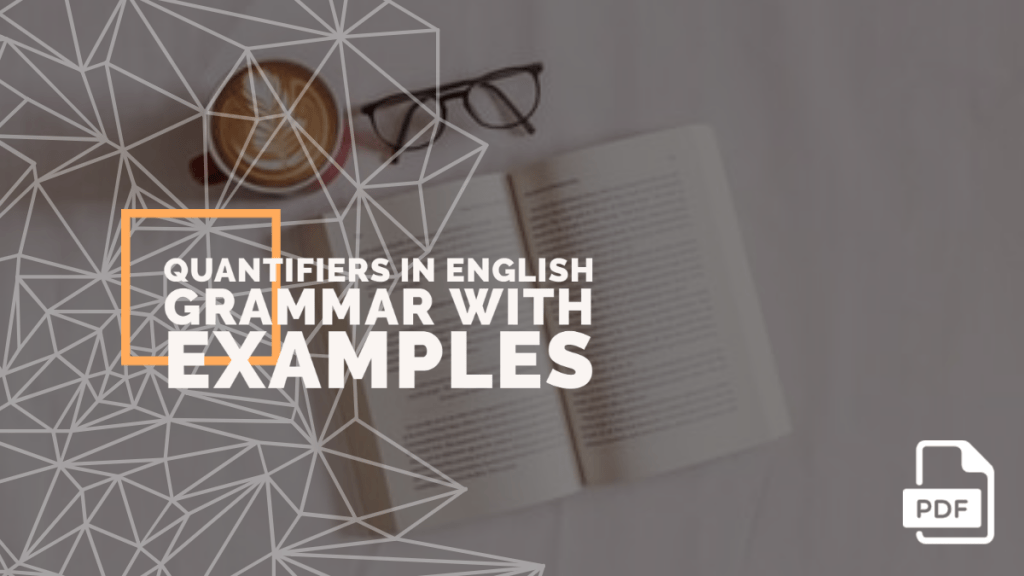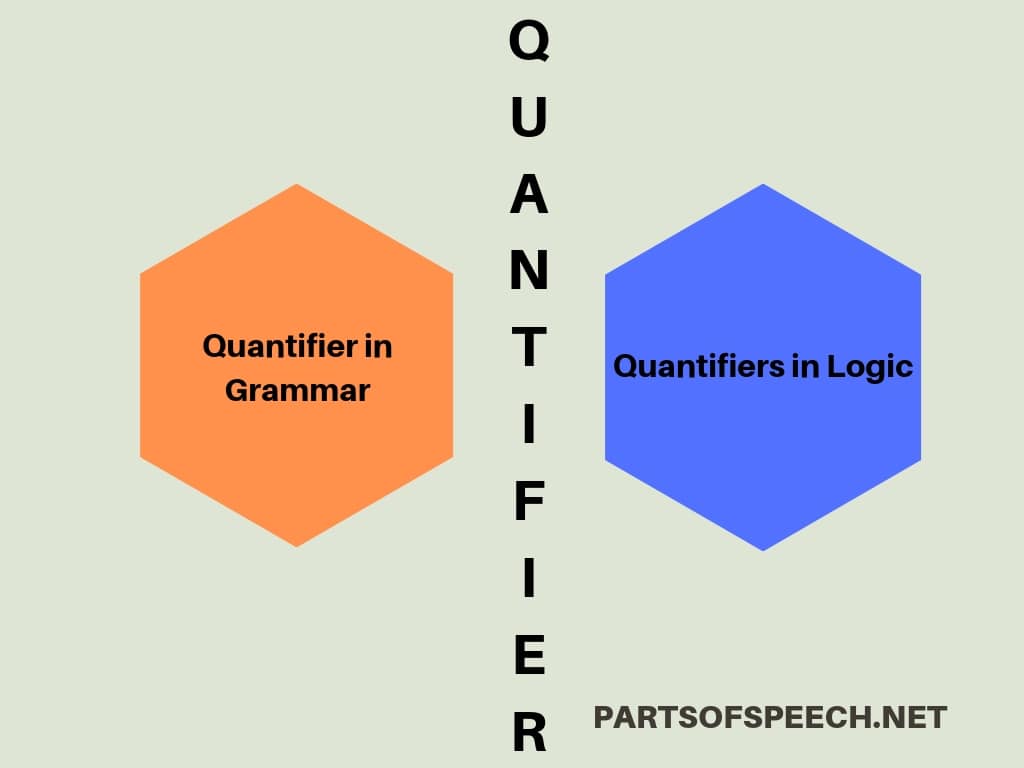Quantifiers in English Grammar with Examples [PDF]
Hello Readers, welcome to another new lesson of English Grammar and that is Quantifier. In this lesson I am going to discuss on the definition, Types and Example of Quantifier in English Grammar, so let’s jump into the lesson. To download the lesson in PDF format, please find the downloadable link attached below in the article.

Quantifier Definition:
As the name suggests, quantifiers are meant to inform us about the quantity or amount of something, particularly a noun. While some quantifiers are more specific to tell us the exact amount of something, some are more generic and can only express whether something is in small or large quantity.
Quantifiers further belong to a much larger class called determiners, which are basically the words people use at the beginning noun phrases. They’re meant to inform us whether a noun phrase being used is specific or general in nature.
Types of Quantifiers:
Quantifiers come in different tastes and shapes. At the core, there are two broad categories in which quantifiers can be explained, and they include.
- Quantifiers in grammar.
- Quantifiers in logic.

Quantifier in Grammar
This encapsulates all the quantifiers that people use before nouns to indicate the number, amount, or quantity of it.
In which case, the quantifier can be used with both countable and uncountable nouns [External Links].
- Quantifiers to use with countable nouns.
These quantifiers are meant to indicate the number or quantity of countable nouns. They don’t necessarily need to narrow to the specific count, but just clue the reader on whether the underlying noun is in small or big quantity.
They include little, a little, a bit of, a large amount of, a great deal of, a large quantity of, and so forth.
NOTE: Little and a little are NOT one and the same.
While little or very little means that there isn’t enough of something, a little can be interpreted to mean something is not a lot, but it’s surely enough.
Examples in a sentence:
- There’s a little milk in the fridge. We can use it to bake the cakes.
- The milk is little. We can’t do much with it.
Same goes for few or very few and a few.
While few or very few means there isn’t enough of something, a few can be interpreted to mean something isn’t a lot, but it’s surely enough. In other words, ‘few’ is meant to express a negative idea while ‘a few’ is more focused on expressing small quantity.
Examples in a Sentence:
- Very few students attended the class.
- The teacher came with only a few books.
- Few people know me by name.
- I only know a few people in town.
- Quantifier to use with uncountable nouns.
These quantifiers are meant to be used before any noun that cannot be counted, such as water, milk, hair, furniture, and so forth.
Examples include all, more, least, any, a lot of, some, less, least and most to name a few.
Quantifiers in Logic
This type of quantifier only indicates the scope of the underlying term or the scope of a specific in domain discourse satisfying an open formula.
Examples of Quantifiers
- Much and Many.
These two quantifiers are meant to express large quantities of the item in question.
Speaking of which, much is used when the underlying noun is singular, while ‘many’ is used when the noun being used is in the plural.
Examples in a Sentence:
- Much money.
- Many friends.
While drawing the difference between the two quantifiers, many people try to establish the connection they have with countable and uncountable nouns [External Link].
In which case, it’s worth noting that countable nouns have both a singular and plural form. In the plural, this type of nouns can be used with numbers, and that’s the reason they’re referred to as countable nouns.
Examples include kids, buses, houses, lamps, roads, and so forth.
Meaning it’s possible to put a number before any of these and still make sense, and if that’s the case the right quantifier to use is many.
Example many kids, many buses, many lamps, many roads, and so forth.
Uncountable nouns on the other hand only occur in the singular. No number attached before them makes any logical sense – and if that’s the case, the most suited quantifier to use before them is much.
Much money, much water, much milk and so forth.
How Much vs How Many.
Again, we use how much when describing uncountable nouns, and how many when describing countable nouns.
Examples with ‘how many’?
- How many eggs?
- How many visitors are we expecting?
- How many of the students should we send home?
Examples with ‘how much’?
- How much water is needed?
- How much money do you need?
- How much furniture?
A lot of/ Lots of.
A ‘lot of’ can be used with both countable and uncountable nouns.
Where a lot of is mostly used in formal writs or conversations, lots of works much better with informal communication.
Examples in a sentence:
- The stage has a lot of buses.
- There are a lot of eggs in the tray.
- There’s a lot of water in the drum.
- The kid was awarded a lot of money.
- He wasted lots of his hard-earned savings on drinking and partying.
Recommended video on Quantifier
This is a complete explanation on Quantifiers in English Grammar, I hope you liked this lesson if you did then please share it to your friend.
References [External Links]:
- Grammar Lessons – Quantifiers – My English Pages
- QUANTIFIER | meaning in the Cambridge English Dictionary